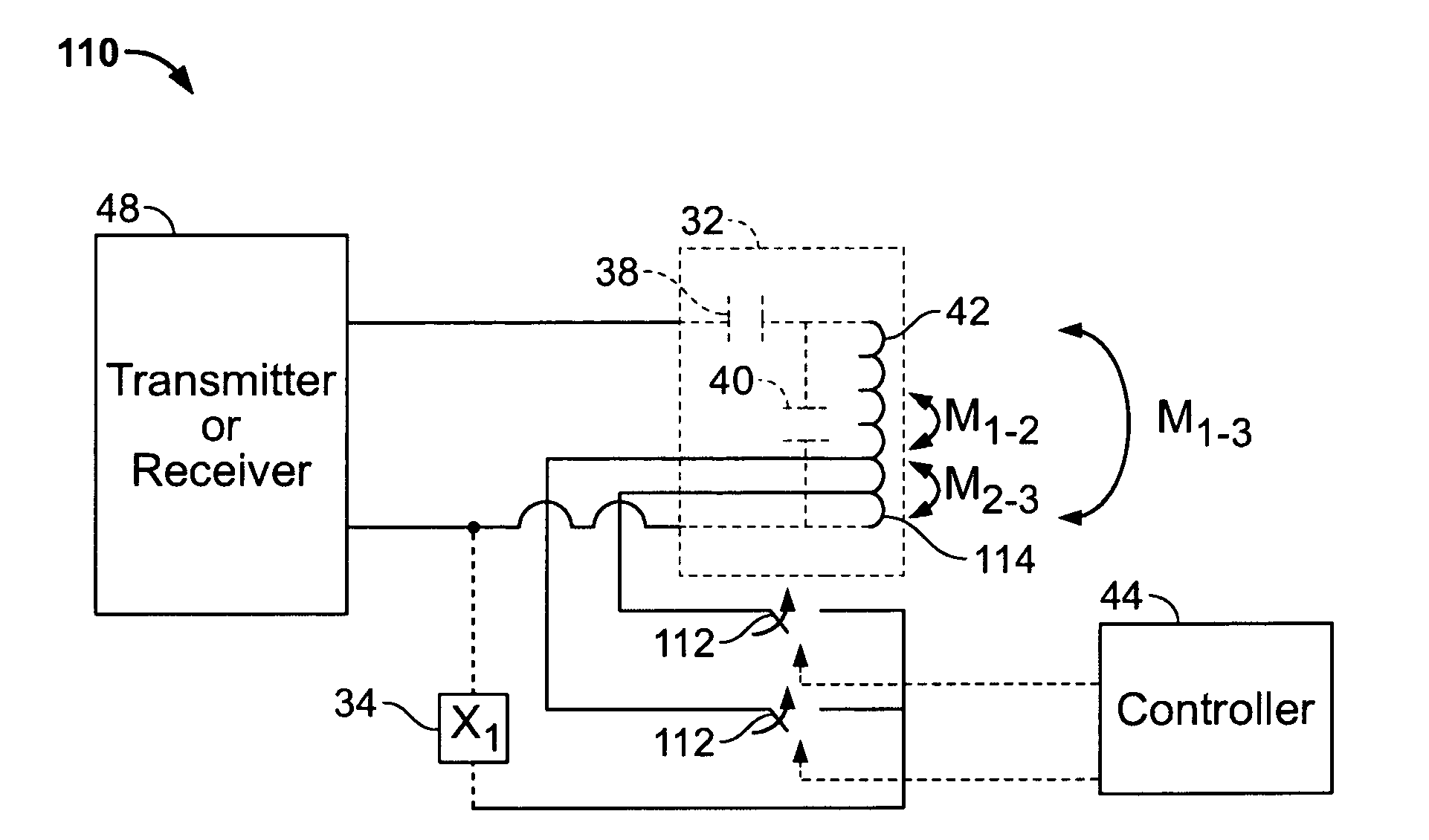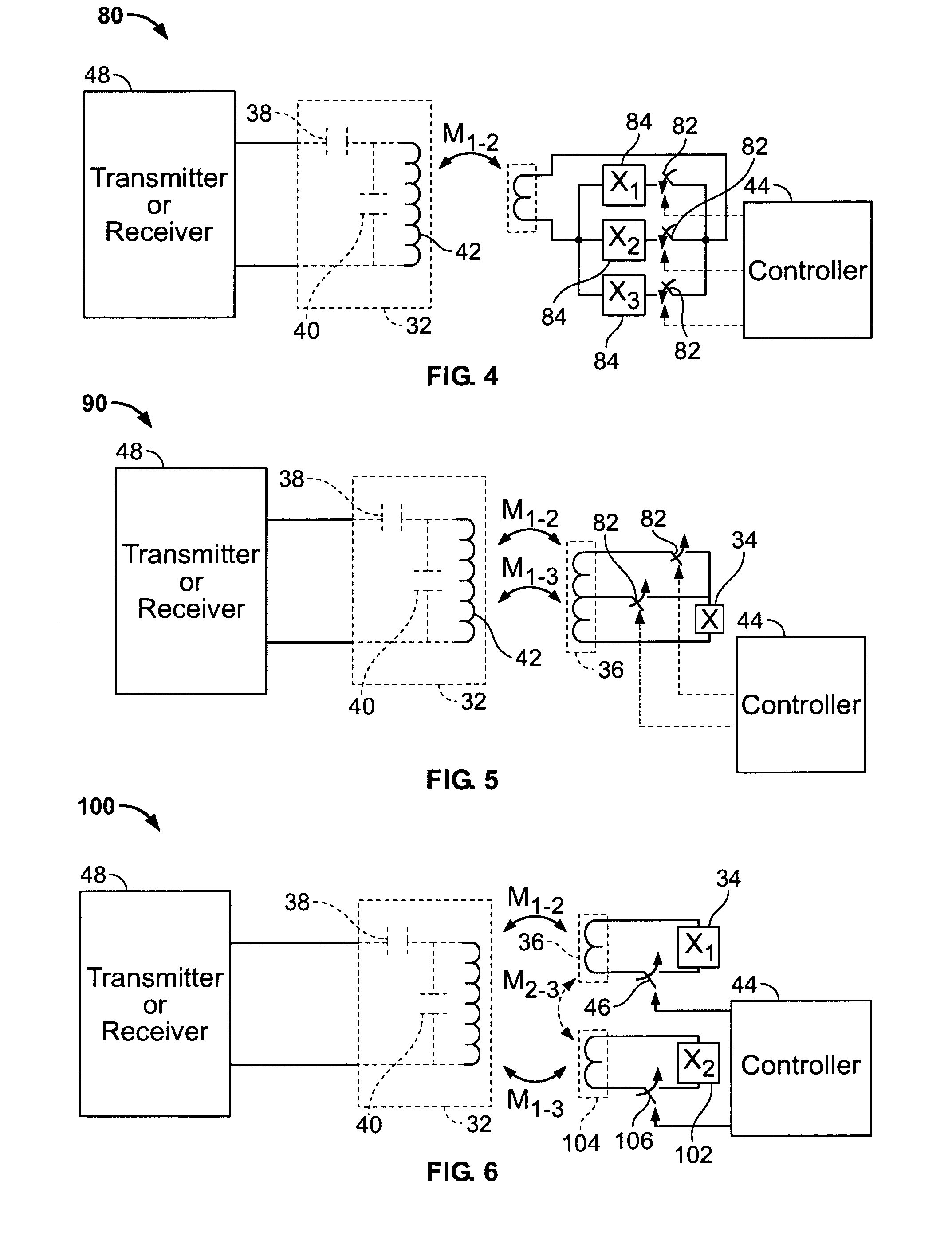Resonant circuit tuning system using magnetic field coupled reactive elements
a reactive element and resonance circuit technology, applied in the field of electromechanical tuning circuits, can solve the problems of affecting tuning and performance, material change, and practicable limitations of high q lcr circuits
- Summary
- Abstract
- Description
- Claims
- Application Information
AI Technical Summary
Problems solved by technology
Method used
Image
Examples
Embodiment Construction
[0028]For simplicity and ease of explanation, the invention will be described herein in connection with various embodiments thereof. Those skilled in the art will recognize, however, that the features and advantages of the various embodiment of the invention may be implemented in a variety of configurations. It is to be understood, therefore, that the embodiments described herein are presented by way of illustration, not of limitation.
[0029]Various embodiments of the invention provide a system and method for tuning an LCR circuit using one or more magnetically coupled reactive elements and / or resistive elements. It should be noted that the tuning system and method may be used in connection with any type of electronic system, for example, in electronic systems wherein a coil is used as either a transmitter or receiver. The tuning system and method also may be used in different types of applications, for example, Electronic Article Surveillance (EAS), Radio Frequency Identification (R...
PUM
 Login to View More
Login to View More Abstract
Description
Claims
Application Information
 Login to View More
Login to View More - R&D
- Intellectual Property
- Life Sciences
- Materials
- Tech Scout
- Unparalleled Data Quality
- Higher Quality Content
- 60% Fewer Hallucinations
Browse by: Latest US Patents, China's latest patents, Technical Efficacy Thesaurus, Application Domain, Technology Topic, Popular Technical Reports.
© 2025 PatSnap. All rights reserved.Legal|Privacy policy|Modern Slavery Act Transparency Statement|Sitemap|About US| Contact US: help@patsnap.com



